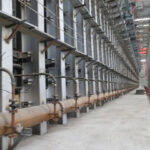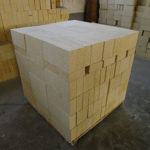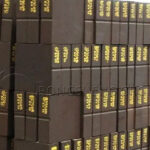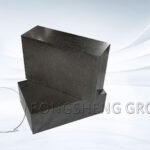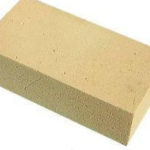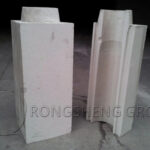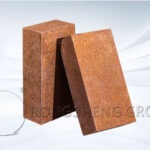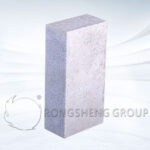Carbon Brick is a kind of neutral refractory material that can resist high-temperature erosion, which is manufactured with carbonaceous as the raw material and added suitable binding agent. Carbon Brick can be used in the blast furnace to built furnace bottom and hearth with its features of good thermal shock resistance and low thermal coefficient of expansion. RS is a Carbon Bricks manufacturer, If you are in need of carbon bricks price, please click to Contact RS Refractory Company.
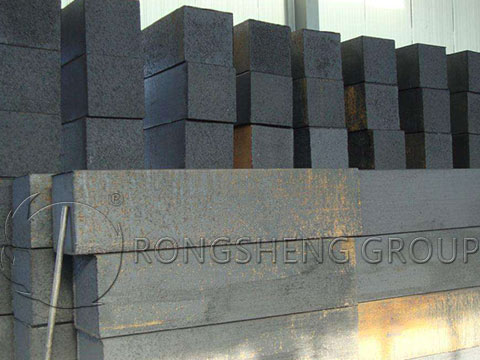
Description For Carbon Brick
Carbon brick includes raw materials of anthracite, coke, and graphite, and binding agents of the pitch, tar, and carbolineum. Anthracite has few volatile components and dense structure, which is often used as aggregate and then added metallurgical coke with pitch as the binding agent when manufacturing carbon bricks for sale.
Carbon Bricks Manufacturing Process
Carbon Bricks Manufacturing Process is similar to other refractory fire bricks’. But it is necessary to prevent carbon oxidation in the high temperature. So all the firing for the raw materials and products must be produced in the reducing atmosphere. Calcine anthracite to eliminate volatile components, sulfur content, and moisture before using. And improve the anthracite’s volume stability, mechanical strength, and inoxidizability. Dry coke to avoid the crack in the firing process caused by much more moisture contained. Fuse pitch and dry it in the temperature between 120~160℃ till its moisture is lower than 0.2%.
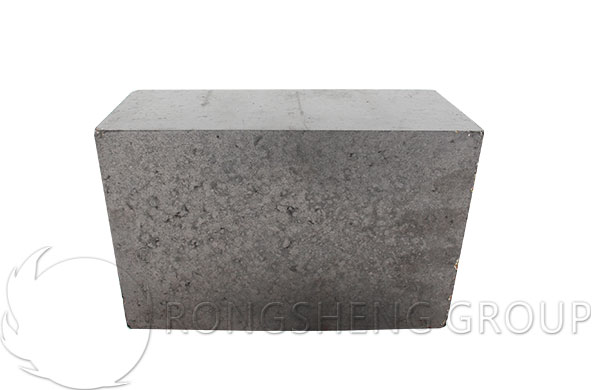
Carbon Bricks Properties
Carbon Bricks have properties of good thermal shock resistance, low thermal coefficient of expansion, high-temperature resistance, and resisting erosion from all kinds of acid, alkali, salt and organic solvent. Carbon Brick is easily oxidized in the oxidizing atmosphere.
Quality Index of Carbon Bricks
- Very high refractoriness. Does not melt or soften. Only when the temperature is very high, there will be volatilization (>3000℃). However, this temperature cannot be reached in a blast furnace.
- High compressive strength. Its compressive strength can reach 250~500kg/cm2, which is similar to a sticky brick. But the compressive strength of clay bricks can reach up to 1000kg/cm2.
- The load softening point is much higher than that of clay bricks. Generally, the load softening temperature of clay bricks is 1400°C. The softening temperature of carbon bricks under load does not exist (that is, the softening point is extremely high). But it must be pointed out that this is only for high-quality carbon bricks with low ash content.
- Good slag resistance. Except for the slag with high FeO content, no slag can play a corrosive effect.
- It has a high wear resistance. Its wear resistance is not inferior to clay bricks.
- Not infiltrated by iron slag (iron slag can not stick to carbon bricks). Therefore, there are fewer chances of nodulation and damage due to iron slag. Therefore, in the past, carbon bricks were laid on the furnace body, thinking that this might reduce the chance of nodulation. Because, generally, furnace knobs are generated at the furnace body. But the results proved that if the operation is not normal, there will still be furnace buildup.
- The expansion coefficient is small. This is one of the characteristics of carbon bricks, and other refractory materials are far inferior to it. Rapid cooling at high temperatures will not produce cracks, which is a very desirable property for certain parts that are easily damaged due to cracks (such as furnace bottom). Therefore, the furnace bottom bricklaying is mostly made of carbon bricks.
- The thermal conductivity is much higher than that of clay bricks, especially graphite bricks. But its effects can be beneficial or harmful. A large heat loss is a negative effect, but it is advantageous to easily generate slag in the lower part. When the lower part of the blast furnace is built with carbon bricks, cooling water can be used instead of cooling water, and only air is used for natural cooling. Even some smaller hearths of blast furnaces do not need cooling at all. But generally, the cooling water tank is still used. Because sometimes the quality of carbon bricks is not good, the hearth is easily destroyed. If there is no cooling water tank, iron slag leakage accidents will occur, and it is not very troublesome to install the cooling water tank. Therefore, the cooling water tank is still used when using carbon bricks.
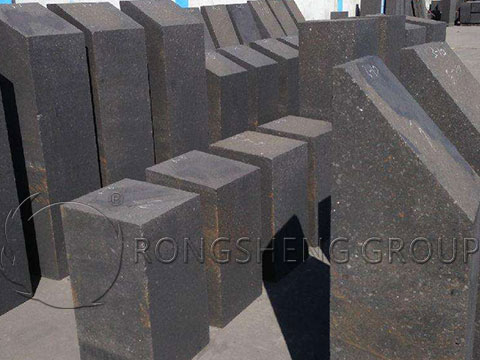
Carbon Bricks Application
Carbon Bricks are widely used in the metallurgical industry. Of which carbon bricks are more used in the blast furnace. Many blast furnaces’ furnace bottom and hearth are built with carbon bricks. Carbon Bricks uses, Rongsheng Carbon Bricks supplier. Carbon Bricks also can be used for pickling bath, plating bath in the electroplating industry, for the dissolving tank in the paper manufacturing industry, for the reactive tank and storage tank in the chemical industry, and for the autoclave in the petrochemical industry.
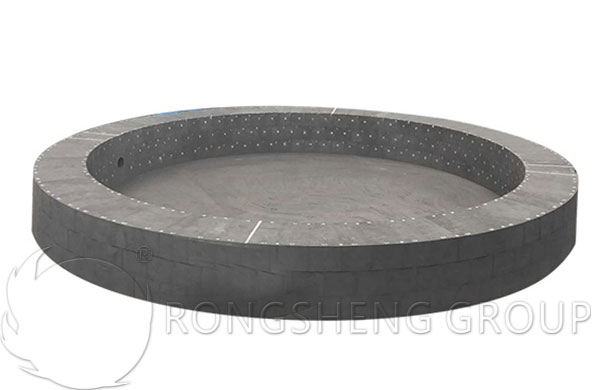
Application of Blast Furnace Carbon Brick
Because of the above-mentioned properties of carbon bricks, it is widely used to build the bottom and hearth of blast furnaces. In recent years, the scope of use has been continuously expanded, and carbon bricks have also begun to be used in the hearth and lower part of the furnace body. It can increase the continuous operation time of the blast furnace and extend the service life.
The performance of refractory materials for blast furnace hearth is one of the key factors affecting the life of blast furnace. In the development of refractory materials for blast furnace hearths, one is to improve the performance and structure of carbon bricks. Hot-pressed carbon bricks with high thermal conductivity, high purity, and micro-pores are used to overcome the damage to the hearth caused by alkali corrosion, carbon deposition, molten iron penetration, and other factors. The second is to adopt new hearth materials.
The “ceramic cup” technology developed by the French company Savoi has now been accepted and adopted worldwide. So far, 21 blast furnaces have adopted the “ceramic cup” technology. A blast furnace with a maximum volume of 5000 m3 will be put into use by 1997. The remarkable feature of the “ceramic cup” technology is that it greatly reduces the damage caused by the penetration of molten iron and reduces heat loss. This allows the 800°C isothermal layer, which is likely to cause embrittlement of the carbon brick, to move into the ceramic cup layer, eliminating the premature damage of the tap hole area caused by the increase of the temperature of the molten iron and the increase of the flow of the molten iron. Thereby improving the life of the hearth.
Contact Rongsheng Refractory Bricks Manufacturer for more details of the furnaces’ lining materials.


